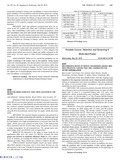Mostrar el registro sencillo del registro
Discordance rates of biopsy techniques among men with prostate cancer that are candidates for active surveillance
| dc.rights.licence | Atribución-NoComercial 4.0 Internacional | * |
| dc.contributor.author | Linder, Brian | |
| dc.contributor.author | Frank, Igor | |
| dc.contributor.author | Umbreit, Eric | |
| dc.contributor.author | Shimko, Mark | |
| dc.contributor.author | Fernández Bonilla, Jose Nicolás | |
| dc.contributor.author | Rangel, Laureano | |
| dc.contributor.author | Karnes, Jeffrey | |
| dc.coverage.temporal | 2005-2007 | |
| dc.date.accessioned | 2020-10-21T01:11:56Z | |
| dc.date.available | 2020-10-21T01:11:56Z | |
| dc.date.created | 2012 | |
| dc.identifier | https://www.auajournals.org/doi/10.1016/j.juro.2012.02.2376 | spa |
| dc.identifier.issn | 0022-5347 / 1527-3792 (Electrónico) | spa |
| dc.identifier.uri | http://hdl.handle.net/10554/51454 | |
| dc.format | spa | |
| dc.format.mimetype | application/pdf | spa |
| dc.language | Inglés | spa |
| dc.rights.uri | http://creativecommons.org/licenses/by-nc/4.0/ | * |
| dc.source | Journal of Urology; Vol. 187 Núm. 4 Supl. (2012) | spa |
| dc.title | Discordance rates of biopsy techniques among men with prostate cancer that are candidates for active surveillance | spa |
| dc.type | info:eu-repo/semantics/article | |
| dc.type.hasversion | http://purl.org/coar/version/c_ab4af688f83e57aa | |
| dc.description.quartilewos | Q1 | spa |
| dc.description.quartilescopus | Q1 | spa |
| dc.identifier.doi | https://doi.org/10.1016/j.juro.2012.02.2376 | spa |
| dc.description.paginas | e887-e887 | spa |
| dc.format.soporte | Papel / Electrónico | spa |
| dc.description.abstractenglish | INTRODUCTION AND OBJECTIVES: With the ongoing stage migration in the diagnosis of prostate cancer, there has been increased interest in management with active surveillance. Our study examines the ability of two prostate biopsy techniques to predict appropriate candidates for active surveillance.METHODS500 consecutive patients, between 2005 and 2007, that underwent trans-rectal ultrasound guided biopsy by either an office biopsy with 12 cores or a saturation biopsy with ≥18 cores, and subsequent radical prostatectomy were identified. Using criteria of: Gleason score ≤6, clinical stage T1 or T2a, Prostate Specific Antigen (PSA) <10 and ≤33% of cores involved, 220 patients were found to be candidates for active surveillance. Pathology results from the prostatectomy specimens were used determine the discordance rate of each biopsy technique.RESULTSOf the 220 candidates for active surveillance, 124 patients underwent an office biopsy with 12 cores, and 96 patients underwent a saturation biopsy. The median number of cores in the saturation biopsy cohort was 27. There was no statistically significant difference between the groups in terms of median age (p=0.18), pre-operative PSA (p=0.48) and clinical stage (p=0.2). At least one previous negative biopsy had been performed on 20 patients (16%) in the office cohort and 43 patients (45%) in the saturation cohort (p= <0.001). In the 12 core biopsy group, 17 patients (14%) were upgraded to Gleason 7 on pathology from the prostatectomy specimen. In the saturation biopsy group, 14 patients (15%) were upgraded to Gleason 7, and 1 patient (1%) was upgraded to Gleason 8. There was no statistically significant difference in the rate of upgrading between the office and saturation biopsy cohorts (p=0.69). In the office biopsy group, 2 patients (1.6%) were upstaged to pT3 disease, compared to 0 patients (0%) in the saturation biopsy group (p=0.58). No statistically significant difference in the estimated tumor volume of the prostatectomy specimen was seen between the cohorts (p=0.47).CONCLUSIONSCandidates for active surveillance can accurately be predicted with 12 core biopsies. In both cohorts, approximately 1 in 6 patients underwent upgrading based on the pathology of the prostatectomy specimen. | spa |
| dc.type.local | Artículo de revista | spa |
| dc.contributor.corporatename | Pontificia Universidad Javeriana. Facultad de Medicina. Departamento de Cirugía y Especialidades. Urología |
Ficheros en el registro
Este registro aparece en la(s) siguiente(s) colección(ones)
-
Artículos [158]


